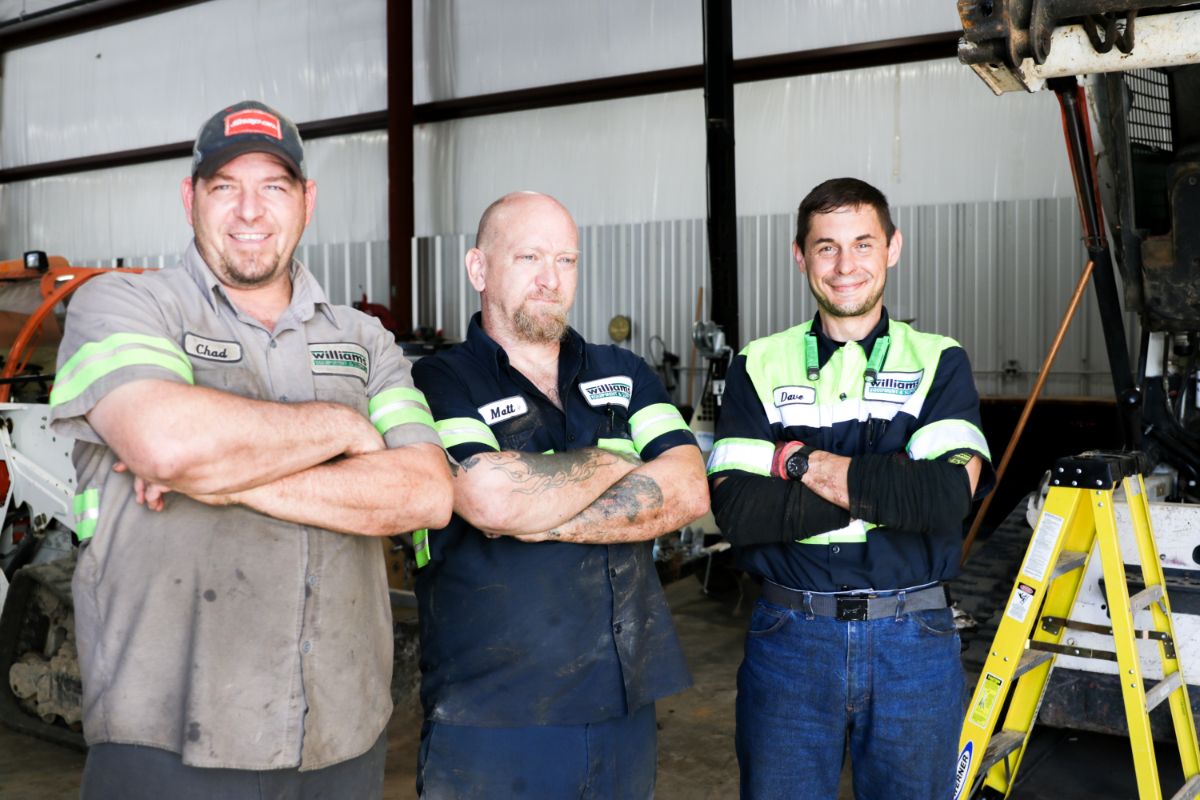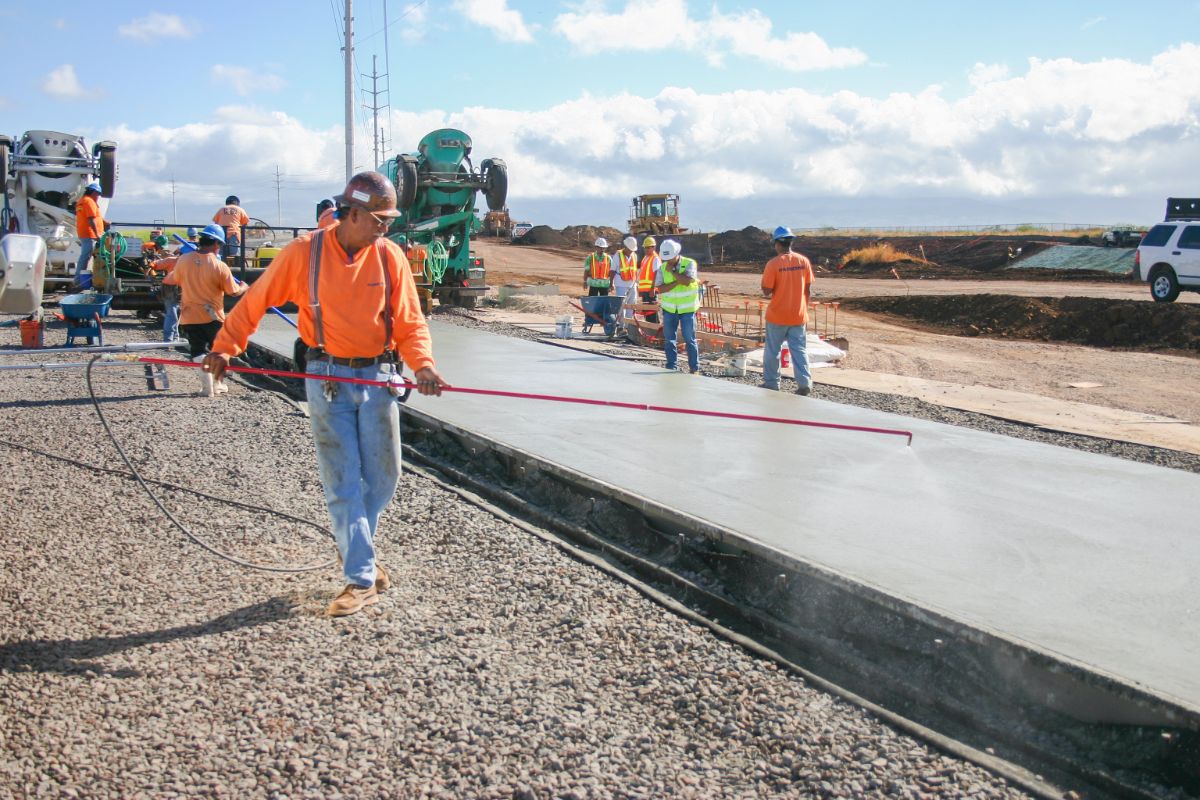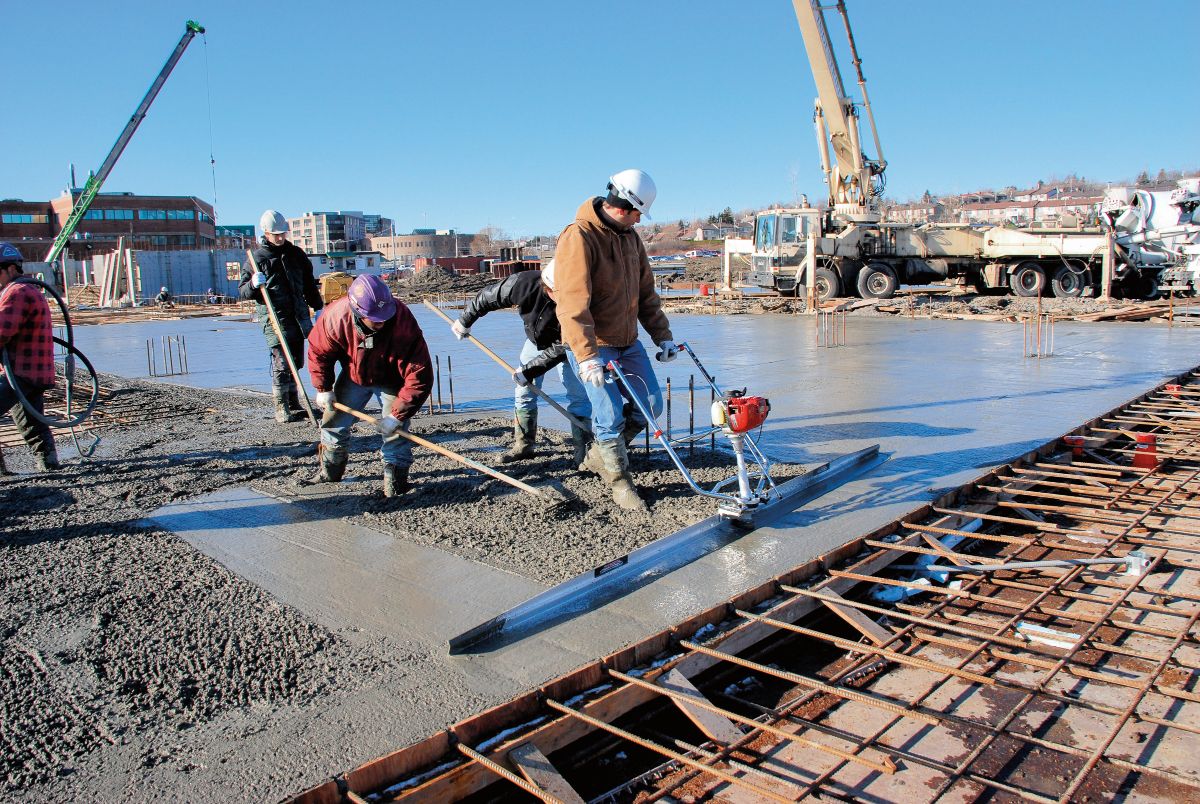As the winter season approaches, it brings along with it cold weather which can spell disaster for even your best-laid concrete. Being able to successfully lay concrete in cold weather expands your business opportunities while helping to keep construction schedules on track, and avoids costly delays that owners, investors and developers cannot afford.
Properly laying concrete in cold weather requires both advance planning and a deep understanding of how to protect your concrete from damaging cold weather. Read on for our top four tips to ensure that your cold weather concreting goes off without a hitch!
Wait, what exactly does “cold weather concreting” mean?
The American Concrete Institute (ACI) requires cold-weather concreting when “the air temperature has fallen to, or is expected to fall below 40°F during the protection period,” with the protection period being defined as “the time required to prevent concrete from being affected by exposure to cold weather.” This means that, if there’s even a risk that air temperatures might fall below 40°F, well, it’s better to be safe than sorry.
There are a few requirements that new concrete has to meet if it’s going to survive winter’s harsh conditions:
- Compressive strength of at least 4000 psi
- Maximum 0.45 water/cementitious ratio
- Contains five to seven percent air entrainment
- Is not subject to any de-icers for one year
If these baseline standards aren’t met, your concrete could lose strength and face surface degradation. Whether your concrete fails to meet these standards because it froze, or it freezes because it failed to meet those standards, concrete durability should never be compromised, even if you’re working on a budget or a deadline.
As you may have experienced, getting your concrete to set in cold weather in such a way that will survive said cold weather is no easy task. Successful cold weather concreting relies on quite a few factors, which we have distilled into four simple tips:
Heat your materials (and your surfaces!)
You can mix your concrete with water that is between 140°F and 180°F to offset the effects of cold weather. Heating your aggregates is a good option when there are extremely cold temperatures at the construction site.
Strong consideration should be given to heating formwork when ambient temperatures are less than 10°F. Warm up formwork and any embeds, including the reinforcement, and remove snow, ice, and water from the forms. Make sure the ground isn’t frozen. This can be accomplished with enclosures, heating blankets, or hydronic heaters. Surfaces should be no more than 15° F colder than the concrete—but also no more than 10° F hotter than the concrete. The basic idea is to avoid shocking the concrete—like a massage, concrete should feel warm, welcome, and relaxed as it settles into place.
When the initial temperature of the concrete is sufficient and moisture levels are appropriate, it is possible to achieve normal set times and required strength gain, even in cold weather.
Note that, since cement hydration is a chemical reaction, the rate at which that reaction takes place depends on the temperature of the concrete and its surrounding environment. However, since the reaction is exothermic, concrete generates some heat for a short duration as it sets. So, if it can be placed at a temperature where the hydration reaction can proceed, and the ambient conditions (whether natural or conditions created with protection) aren’t too cold, concrete can keep itself warm.
Use accelerating admixtures to save time
In addition to heating your materials, you can use accelerants that help quicken set times to beat out the cold weather. Remember that using accelerating admixtures only compliments, and does not replace, proper protection of concrete in cold weather.
Accelerating admixtures won’t prevent concrete from freezing, and using them doesn’t shortcut the requirements for curing and protection from freezing, but it can accelerate the setting process.
Protect your hard work with cold weather protection
Though protection is one of the most important steps in the concrete-laying process, it’s also the one with the most wiggle room. The ACI describes protection as anything that “allows the concrete to gain strength at a normal rate and prevents the concrete from early-age damage by freezing of the mixing water,” meaning that there are many strategies you may employ to protect your concrete, as long as protection is adequate.
Research supports the contention that concrete is vulnerable to freeze-thaw cycles until its compressive strength reaches 4000 psi. Note that the longer the protection period, the more insulation needed, since the heat of hydration will start decreasing after the first three days. In cold weather, the length of the protection period must be extended as much as 50 to 100 percent. For example, according to the ACI, if exposed, no-load, normal-set concrete usually requires a two-day protection period, this requirement expands to three days in cold weather.
After a pour, you should use insulating blankets, heating units, and enclosures to provide critical cold weather protection for your concrete throughout your protection period.
Heaters are perhaps the cold weather concrete contractor’s weapon of choice. There are three types of heaters: direct-fired, indirect-fired, and hydronic. Direct-fired heaters are very common, but can present a risk due to the combustion byproducts that are discharged along with the heated air. Not only can carbon dioxide combine with the surface of the fresh concrete to result in a soft chalky surface that will “dust” and fall away, but carbon monoxide is a very serious health hazard to workers.
Hydronic heating systems have become popular for winter work, especially on bridge decks. This technique can be used without enclosures and can protect much larger areas than could be reasonably enclosed.
Enclosures are the best protection from cold weather but also the most expensive. Take care to control the interior environment. Steam heat is great for the concrete, but not so much for workers or ice prevention. Dry heat, on the other hand, can dry out the concrete surface and cause crazing cracks.
These minimum protection periods are intended only to protect the concrete from being damaged by the cold. These times do not mean the concrete has gained enough strength to support the loads it will experience when in service. For structural concrete, longer protection periods are needed. There are several ways to determine the strength of the concrete for stripping of forms or removal of shores, including maturity testing which combines curing time and temperature to indicate the current strength of the concrete.
Be sure to allow your concrete to cool slowly as you remove the protection to prevent cracking caused by thermal shocks.
On de-icers and sealers
The Williams Equipment & Supply team recommends avoiding de-icers entirely, at least during the setting and curing phase. Freshly placed concrete and de-icers are simply not compatible.
Although sodium chloride and calcium chloride are acceptable for use on high-quality, dense concrete, common de-icers like sodium chloride, calcium chloride, potassium chloride, magnesium chloride, calcium magnesium acetate, nitrogen salts, ammonium sulfate and urea can all present problems. In particular, ammonium nitrate and ammonium sulfate are highly incompatible with concrete surfaces.
You can use a sealer to prevent or delay the development of surface imperfections. Silane or siloxane-based penetrating concrete sealers typically offer the best resistance to the adverse effects of deicers. Water-repellent sealers can also provide added protection.

Keep your concrete warm and snug with Williams Equipment & Supply
By following protection guidelines and periods, you trust your concrete to perform in cold weather. Whether you’re looking for jobsite advice, equipment rentals, or high-quality construction materials, Williams Equipment & Supply has all the concrete mix, protective materials, heaters, and more that you need to keep your concrete firm and your projects on track this winter season.
Get in touch with any of our locations across the Mid-South for advice, materials, or equipment, and happy cold weather concreting this winter season!

